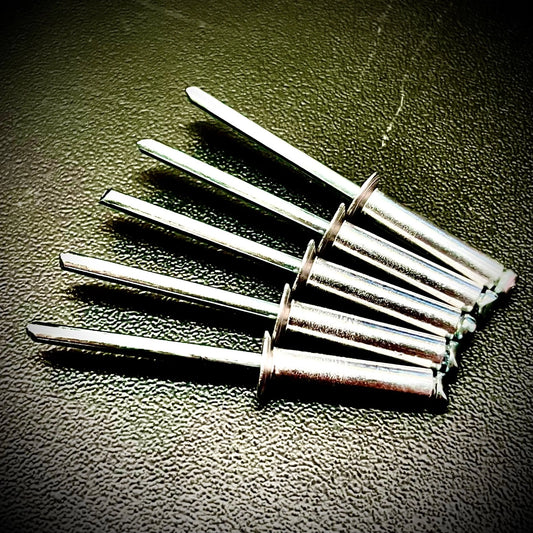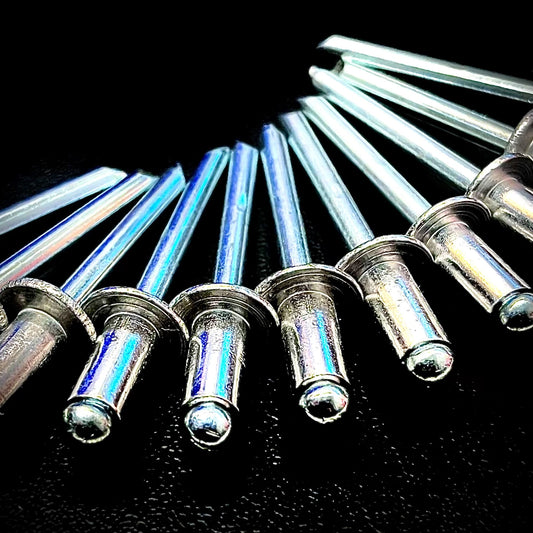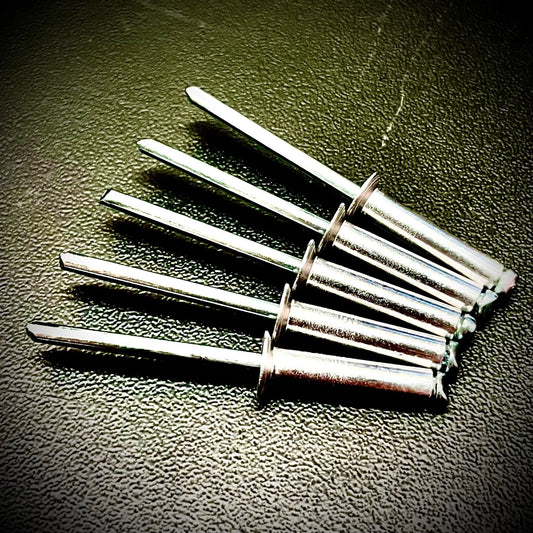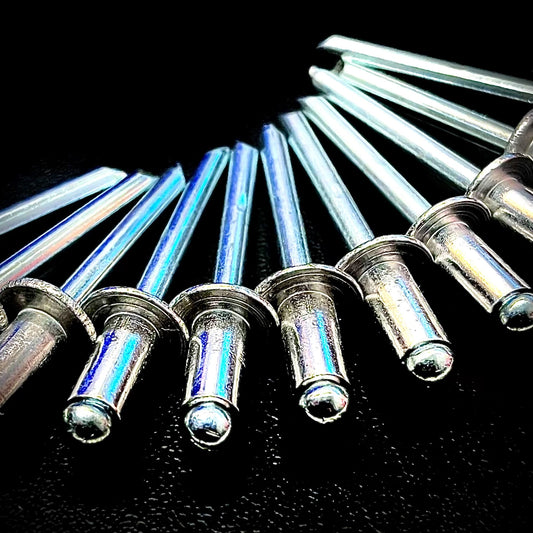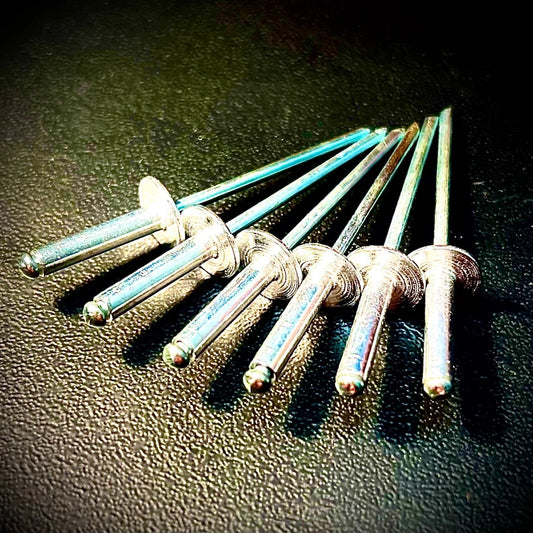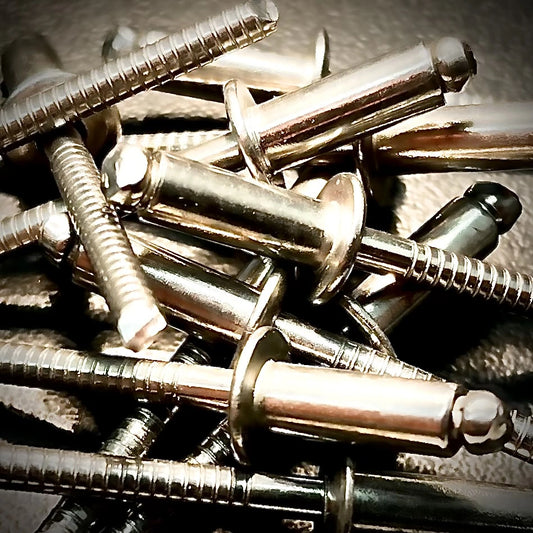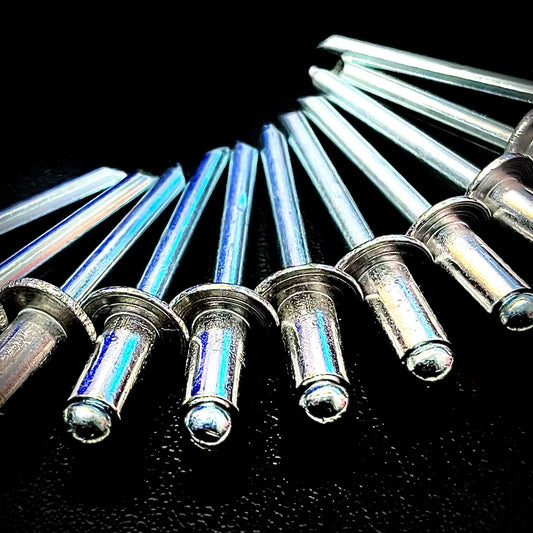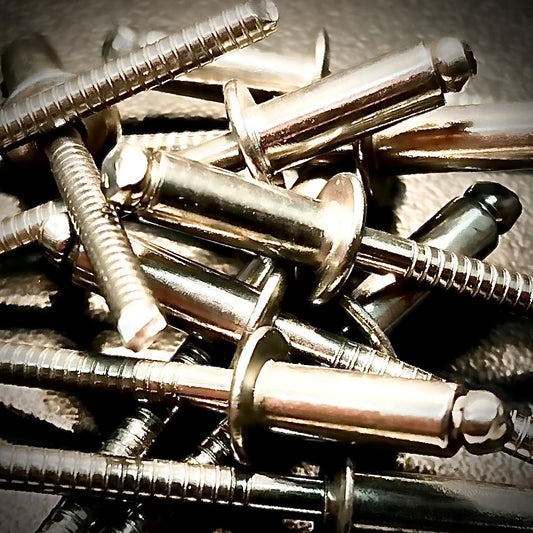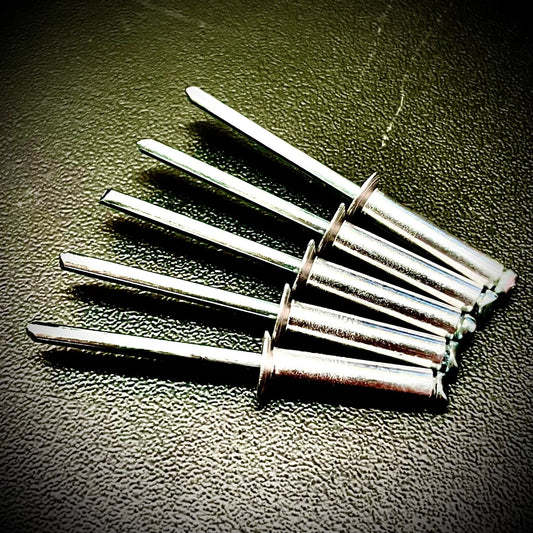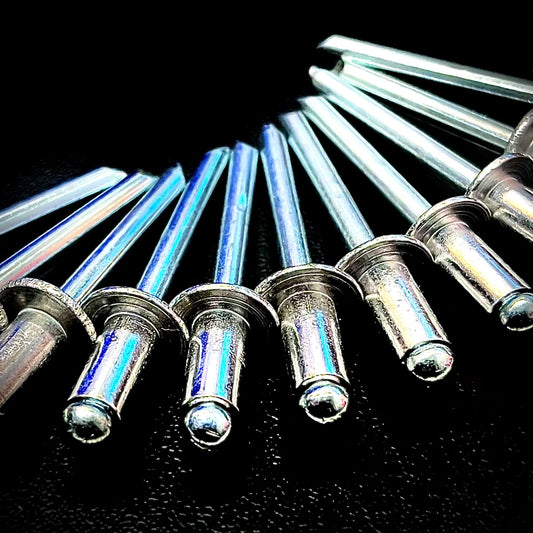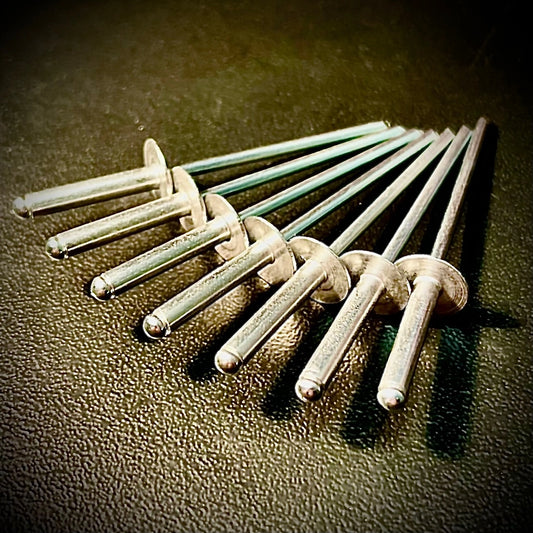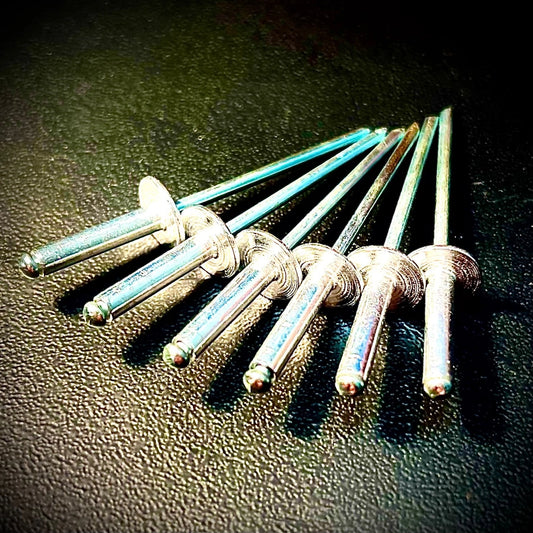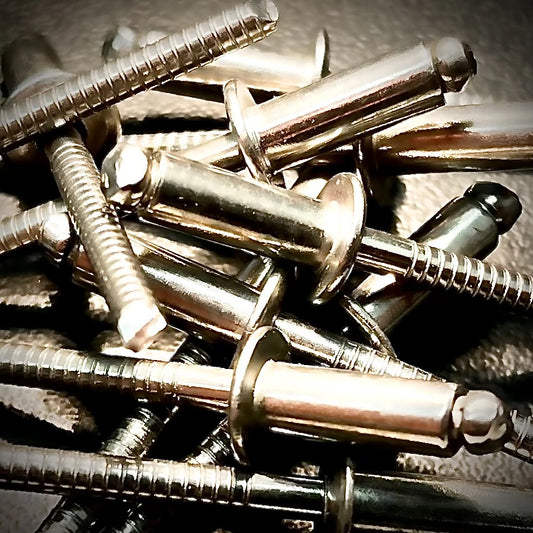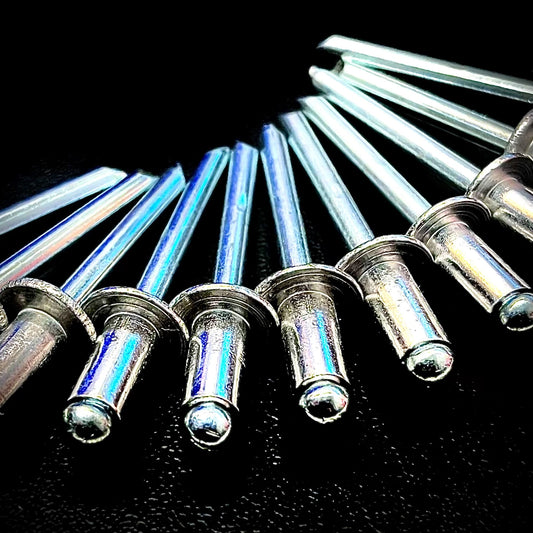Collection: Rivets
Fixaball sells all lengths dome, large flange and countersunk, aluminium blind rivets.
Blind rivets, commonly referred to as "pop" rivets (POP is the brand name of the original manufacturer, now owned by Stanley Engineered Fastening, a division of Stanley Black & Decker) are tubular and are supplied with a mandrel through the center. The rivet assembly is inserted into a hole drilled through the parts to be joined and a specially designed tool is used to draw the mandrel into the rivet. This expands the blind end of the rivet and then the mandrel snaps off. These types of blind rivets have non-locking mandrels and are sometimes avoided for critical structural joints because the mandrels may fall out, due to vibration or other reasons, leaving a hollow rivet that has a lower load-carrying capability than solid rivets. Furthermore, because of the mandrel they are more prone to failure from corrosion and vibration. Unlike solid rivets, blind rivets can be inserted and fully installed in a joint from only one side of a part or structure, "blind" to the opposite side.
-
2.4mm Countersunk Pop Blind Rivets Aluminium/ Steel
Vendor:Countersunk - Blind RivetRegular price From £3.90 GBPRegular priceUnit price / per£0.00 GBPSale price From £3.90 GBP -
2.4mm Pop Blind Rivets Domed Aluminium/ Steel ISO 15983A
Vendor:Dome - Blind RivetRegular price From £3.79 GBPRegular priceUnit price / per£0.00 GBPSale price From £3.79 GBP -
3.2mm Countersunk Pop Blind Rivets Aluminium/ Steel
Vendor:Countersunk - Blind RivetRegular price From £3.78 GBPRegular priceUnit price / per£0.00 GBPSale price From £3.78 GBP -
3.2mm Pop Blind Rivets Domed Aluminium/ Steel ISO 15983A
Vendor:Dome - Blind RivetRegular price From £3.79 GBPRegular priceUnit price / per£0.00 GBPSale price From £3.79 GBP -
3.2mm Pop Blind Rivets Large Flange Aluminium
Vendor:Large Flange - Blind RivetRegular price From £4.03 GBPRegular priceUnit price / per£0.00 GBPSale price From £4.03 GBP -
3.2mm Pop Rivets Domed A2/ 304 Stainless Steel ISO 15983A
Vendor:Dome - Blind RivetRegular price From £4.00 GBPRegular priceUnit price / per£0.00 GBPSale price From £4.00 GBP -
3mm Countersunk Pop Blind Rivets Aluminium/ Steel
Vendor:Countersunk - Blind RivetRegular price From £3.88 GBPRegular priceUnit price / per£0.00 GBPSale price From £3.88 GBP -
3mm Pop Blind Rivets Domed Aluminium/ Steel ISO 15983A
Vendor:Dome - Blind RivetRegular price From £3.68 GBPRegular priceUnit price / per£0.00 GBPSale price From £3.68 GBP -
4.0mm Pop Rivets Domed A2/ 304 Stainless Steel ISO 15983A
Vendor:Dome - Blind RivetRegular price From £4.22 GBPRegular priceUnit price / per£0.00 GBPSale price From £4.22 GBP -
4.8mm Countersunk Pop Blind Rivets Aluminium/ Steel
Vendor:Countersunk - Blind RivetRegular price From £4.39 GBPRegular priceUnit price / per£0.00 GBPSale price From £4.39 GBP -
4.8mm Pop Blind Rivets Domed Aluminium/ Steel ISO 15983A
Vendor:Dome - Blind RivetRegular price From £4.45 GBPRegular priceUnit price / per£0.00 GBPSale price From £4.45 GBP -
4.8mm Pop Blind Rivets Large Flange Aluminium
Vendor:Large Flange - Blind RivetRegular price From £5.30 GBPRegular priceUnit price / per£0.00 GBPSale price From £5.30 GBP -
4.8mm Pop Blind Rivets Large Flange Aluminium
Vendor:Large Flange - Blind RivetRegular price From £5.71 GBPRegular priceUnit price / per£0.00 GBPSale price From £5.71 GBP -
4.8mm Pop Rivets Domed A2/ 304 Stainless Steel ISO 15983A
Vendor:Dome - Blind RivetRegular price From £4.94 GBPRegular priceUnit price / per£0.00 GBPSale price From £4.94 GBP -
4mm Countersunk Pop Blind Rivets Aluminium/ Steel
Vendor:Countersunk - Blind RivetRegular price From £4.01 GBPRegular priceUnit price / per£0.00 GBPSale price From £4.01 GBP -
4mm Pop Blind Rivets Domed Aluminium/ Steel ISO 15983A
Vendor:Dome - Blind RivetRegular price From £4.09 GBPRegular priceUnit price / per£0.00 GBPSale price From £4.09 GBP

